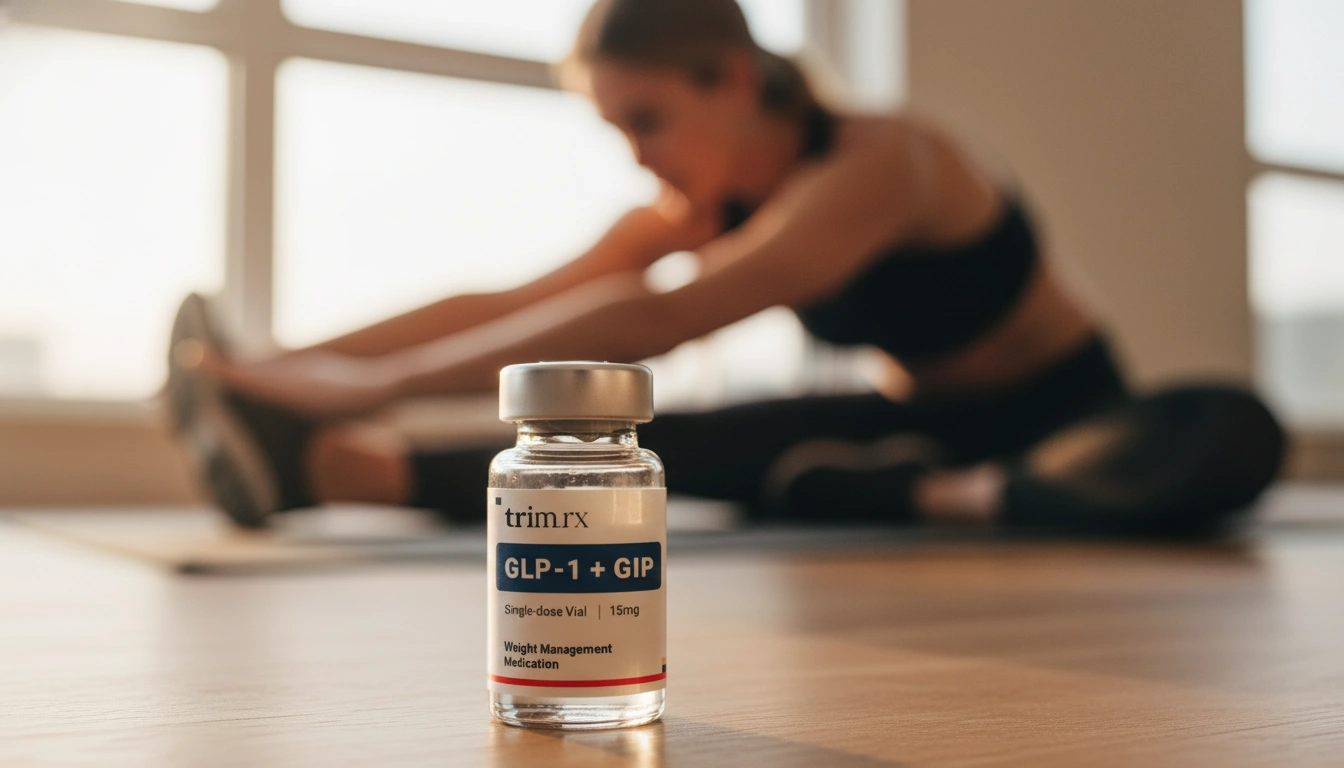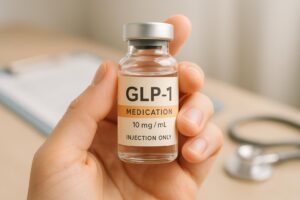Does GLP-1 Increase Blood Pressure? Exploring the Complex Relationship

When it comes to weight management and metabolic health, the landscape of treatment options is constantly evolving. One of the most talked-about classes of medications in recent years is glucagon-like peptide-1 receptor agonists (GLP-1 RAs). These medications have gained attention not only for their ability to aid in weight loss but also for their potential effects on cardiovascular health. As we delve deeper into this topic, a pressing question arises: Does GLP-1 increase blood pressure?
In this post, we will explore the multifaceted relationship between GLP-1 medications and blood pressure. We will examine the existing research, discuss the mechanisms involved, and consider the implications for individuals who might be prescribed these medications as part of a comprehensive weight loss program. By the end of this blog, you should have a clearer understanding of how GLP-1 RAs interact with blood pressure levels and what that might mean for your health.
Introduction
Did you know that nearly half of all adults in the United States suffer from hypertension, a condition often intertwined with obesity and metabolic disorders? As healthcare providers seek effective strategies to combat these interrelated issues, GLP-1 receptor agonists have emerged as a promising option. Originally developed to manage blood sugar levels in individuals with type 2 diabetes, these medications have shown significant potential for weight loss, which can, in turn, impact blood pressure.
However, the relationship between GLP-1 medications and blood pressure is not entirely straightforward. While some studies suggest that chronic use of GLP-1 RAs may lead to modest reductions in blood pressure, others indicate that short-term use can result in an increase in blood pressure. This duality raises important questions for patients and healthcare practitioners alike.
In this blog post, we will address several key areas:
- Understanding GLP-1 and its Mechanism of Action
- The Evidence: Does GLP-1 Increase Blood Pressure?
- Potential Mechanisms Behind Blood Pressure Changes
- Implications for Weight Loss and Cardiovascular Health
- Conclusion and Recommendations
Let’s embark on this informative journey together as we dissect the intricate relationship between GLP-1 medications and blood pressure, aiming to provide clarity and insight for those navigating their weight loss and health management journeys.
Understanding GLP-1 and Its Mechanism of Action
GLP-1 is a hormone that plays a crucial role in glucose metabolism. Secreted by the intestines in response to food intake, GLP-1 helps regulate blood sugar levels by enhancing insulin secretion, inhibiting glucagon release, and slowing gastric emptying. These actions contribute to a feeling of fullness, which can lead to reduced food intake and weight loss.
GLP-1 receptor agonists, such as semaglutide and liraglutide, mimic the effects of this hormone. They are commonly prescribed for managing type 2 diabetes and have gained popularity for their weight loss benefits. In clinical settings, these medications are administered through injections, and they have been shown to improve glycemic control and promote significant weight loss.
The Role of GLP-1 in Cardiovascular Health
As we explore the effects of GLP-1 medications on blood pressure, it is essential to understand their broader implications for cardiovascular health. Research indicates that GLP-1 receptor activation can positively influence several cardiovascular risk factors, including weight, lipid levels, and inflammation. However, the impact on blood pressure remains a topic of ongoing investigation.
The Evidence: Does GLP-1 Increase Blood Pressure?
When evaluating whether GLP-1 increases blood pressure, it is essential to look at the research findings surrounding this topic. Studies have yielded mixed results, indicating both potential increases and decreases in blood pressure depending on the context of use.
Short-Term vs. Long-Term Effects
-
Short-Term Effects: Some studies have shown that acute administration of GLP-1 RAs may result in a temporary increase in blood pressure. For example, patients experiencing a rapid increase in heart rate and blood pressure shortly after administration may be attributed to various physiological responses, including sympathetic activation. This phenomenon may be particularly relevant in individuals with pre-existing hypertension or other cardiovascular conditions.
-
Long-Term Effects: In contrast, longer-term studies have suggested that chronic use of GLP-1 RAs may lead to a modest reduction in systolic blood pressure. A meta-analysis of several clinical trials indicated a mean decrease in blood pressure values among individuals treated with these medications over extended periods. The reduction, while modest (around 2-3 mmHg), is noteworthy, especially when considering the cumulative benefit of lifestyle changes and weight loss that often accompany GLP-1 therapy.
Clinical Studies and Outcomes
A notable study published in the American Heart Association journal highlighted that the use of GLP-1 RAs could lead to significant systolic blood pressure reductions in individuals with obesity. The findings suggested that these medications could be beneficial in managing hypertension, particularly in patients with comorbid obesity and type 2 diabetes.
Conversely, other studies have pointed to instances where GLP-1 agonists did not lead to significant changes in blood pressure readings. This variability may be influenced by factors such as the patient population studied, baseline blood pressure levels, and the presence of other comorbidities.
Conclusion on Blood Pressure Effects
In summary, while there is evidence to suggest that GLP-1 medications can have both hypertensive and hypotensive effects, the overall trend leans towards a modest reduction in blood pressure with long-term use. This dual effect underscores the necessity of personalized medical approaches, where patient history, weight management goals, and existing health conditions must all be taken into account.
Potential Mechanisms Behind Blood Pressure Changes
Understanding why GLP-1 medications can variably affect blood pressure involves delving into several physiological mechanisms at play.
1. Sympathetic Nervous System Activation
One proposed mechanism for the short-term increase in blood pressure observed after GLP-1 administration is the activation of the sympathetic nervous system. Studies have indicated that GLP-1 receptor activation can stimulate sympathetic outflow, leading to increased heart rate and, in some cases, elevated blood pressure. This effect may be more pronounced in individuals with underlying cardiovascular issues.
2. Natriuresis and Fluid Balance
On the flip side, GLP-1 RAs have been shown to enhance natriuresis, which is the excretion of sodium through urine. Increased sodium excretion can lead to decreased fluid retention and lower blood pressure over time. The balance between these opposing effects—sympathetic activation and increased natriuresis—plays a critical role in determining the overall impact of GLP-1 on blood pressure.
3. Vascular Effects
GLP-1 also has vascular effects that may contribute to blood pressure regulation. Research has suggested that GLP-1 can induce vasodilation, potentially lowering blood pressure. However, this effect may be context-dependent and requires further investigation to fully understand its implications.
4. Renin-Angiotensin-Aldosterone System (RAAS)
The interaction between GLP-1 and the renin-angiotensin-aldosterone system is another area of interest. Some studies suggest that GLP-1 may inhibit components of the RAAS, which is a critical pathway in blood pressure regulation. By modulating RAAS activity, GLP-1 medications could potentially contribute to long-term blood pressure benefits.
Implications for Weight Loss and Cardiovascular Health
The interrelationship between weight loss, GLP-1 medications, and blood pressure management is profound. For individuals struggling with obesity and hypertension, GLP-1 receptor agonists offer a dual benefit: they can aid in weight loss while also potentially lowering blood pressure over time.
1. Weight Loss Benefits
Weight loss has been shown to be one of the most effective strategies for reducing blood pressure, particularly in individuals with obesity. By facilitating weight loss through appetite regulation and increased satiety, GLP-1 medications can significantly impact cardiovascular health.
2. Cardiovascular Risk Reduction
Managing blood pressure is crucial in reducing the risk of cardiovascular events, such as heart attacks and strokes. By addressing both weight and blood pressure simultaneously, GLP-1 medications represent a comprehensive approach to improving overall cardiovascular health.
3. Personalized Treatment Approaches
As with any medication, the effectiveness of GLP-1 receptor agonists can vary among individuals. It is essential for patients to work closely with their healthcare providers to develop a personalized treatment plan that considers their unique health profile, weight loss goals, and cardiovascular risk factors.
Conclusion and Recommendations
In conclusion, the relationship between GLP-1 receptor agonists and blood pressure is nuanced and complex. While acute administration may lead to transient increases in blood pressure, long-term use appears to confer modest reductions, particularly when combined with weight loss efforts. This duality highlights the importance of personalized care in managing weight and blood pressure.
For individuals considering GLP-1 medications as part of their weight loss journey, we encourage you to take our free assessment quiz to see if you qualify for our prescription weight loss medications. Understanding your unique health profile is essential for tailoring an effective treatment plan.
Additionally, for those seeking immediate support, our quick-access supplements, such as GLP-1 Daily Support and Weight Loss Boost, can help enhance your overall wellness during your weight loss journey.
As we continue to navigate the complexities of weight management and cardiovascular health, it is vital to stay informed and engaged in conversations with healthcare providers. Together, we can create effective strategies for a healthier future.
FAQ
Do GLP-1 medications always increase blood pressure?
A1: Not necessarily. While some studies show short-term increases in blood pressure, long-term use of GLP-1 medications often results in modest reductions.
How do GLP-1 medications help with weight loss?
A2: GLP-1 medications promote weight loss by reducing appetite, slowing gastric emptying, and enhancing insulin secretion, which helps regulate blood sugar levels.
Are there any side effects associated with GLP-1 medications?
A3: Common side effects may include nausea, vomiting, and diarrhea. It is essential to discuss any concerns with a healthcare provider.
Can GLP-1 medications be used for individuals without diabetes?
A4: Yes, GLP-1 receptor agonists can be prescribed for weight management in individuals with obesity or overweight, even if they do not have diabetes.
What should I do if I experience a significant increase in blood pressure while on GLP-1 medication?
A5: It is crucial to consult with your healthcare provider to assess your situation and determine the best course of action.
By understanding the complexities around GLP-1 medications and their impact on blood pressure, we can empower ourselves to make informed decisions about our health.

Transforming Lives, One Step at a Time
Keep reading
Tracking Progress With GLP-1: What To Measure
Learn which metrics to track on GLP‑1 therapy—weight, waist, blood sugar, lipids, side effects, and non‑scale wins—and how often to monitor them.
Fatigue Solutions for Ozempic and Wegovy Users
Hydration, protein-rich meals, light activity, and better sleep can reduce medication-related fatigue and help maintain energy during weight-loss treatment.
GLP-1 Medication Side Effect Checker
Worried about GLP-1 medication side effects? Use our free checker for Semaglutide, Liraglutide, and more to learn what to expect and stay informed!



